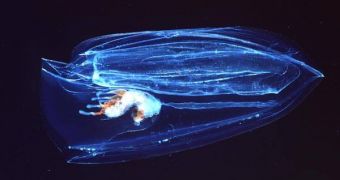It's in the natural cycle of the North Atlantic Ocean to turn green every summer, when plankton blooms and becomes noticeable even from satellite. Made up of hundred of billions of small microorganisms and tiny crustaceans, it represents the basis of the marine ecosystem, and is indispensable to life in the oceans. For more than 50 years, scientists thought they had an explanation as to why this cycle occurred and what caused it. Now, a decade's worth of satellite investigations proved the theory bogus.
Until now, marine biologists thought that the plankton was generated when summer heat radiated into the ocean. The temperature rose constantly, and then, once a certain threshold was reached, life began to appear. This is the common-sense theory, and its deductibility was one of the main reasons why it was seldom questioned. Now, experts prove with the help of ten years' worth of satellite readings that this is not what happens in reality, and that the plankton begins to bloom at the end of the winter season.
“We found that the north Atlantic bloom was starting much earlier than we thought and it didn’t coincide with an improvement in the growth conditions from the phytoplankton. It started in January,” Oregon State University phytoplankton ecologist Michael Behrenfeld explains, quoted by Wired. “When we said [the blooms] are beginning in the middle of winter, it meant that the basic understanding of what causes the blooms was wrong,” he adds.
He and his team focused their investigation on understanding how nutrient availability and sunlight influenced the growth of plankton, as these are the two main requirements that have to be met before plankton populations can begin to shape up. The idea that the development stage started before spring was presented for the first time last month at a NASA meeting. The explanation they provided was in much better tune with satellite data than the existing one.
They say that colder months force the surface water to cool, which in turn sinks and sends up some warmer water from beneath. The cycle naturally repeats again, and new, warmer water is pushed up. This cycle, which lasts only throughout the winter months, creates a natural convection in the upper layers of the ocean, a phenomenon that can best be understood when looking at the way water boils in a kettle and moves about.
These convection forces spread the plankton out over a larger surface of the ocean, which means that less predators can eat it. It multiplies like crazy, but is not visible because it is continuously mixed. When winter ends, so do the convection currents, and the entire amounts of plankton that have been circulating under the waves are suddenly confined to the surface of the ocean, giving it the blooming effect. “The decoupling between predators and prey occurred before but you start seeing the effect when the mixing stops,” Behrenfeld says.

 14 DAY TRIAL //
14 DAY TRIAL //